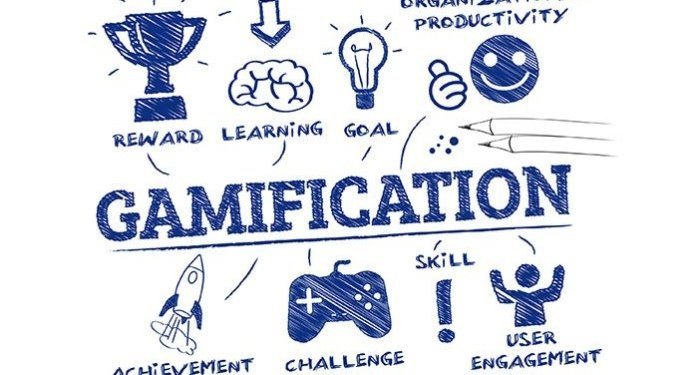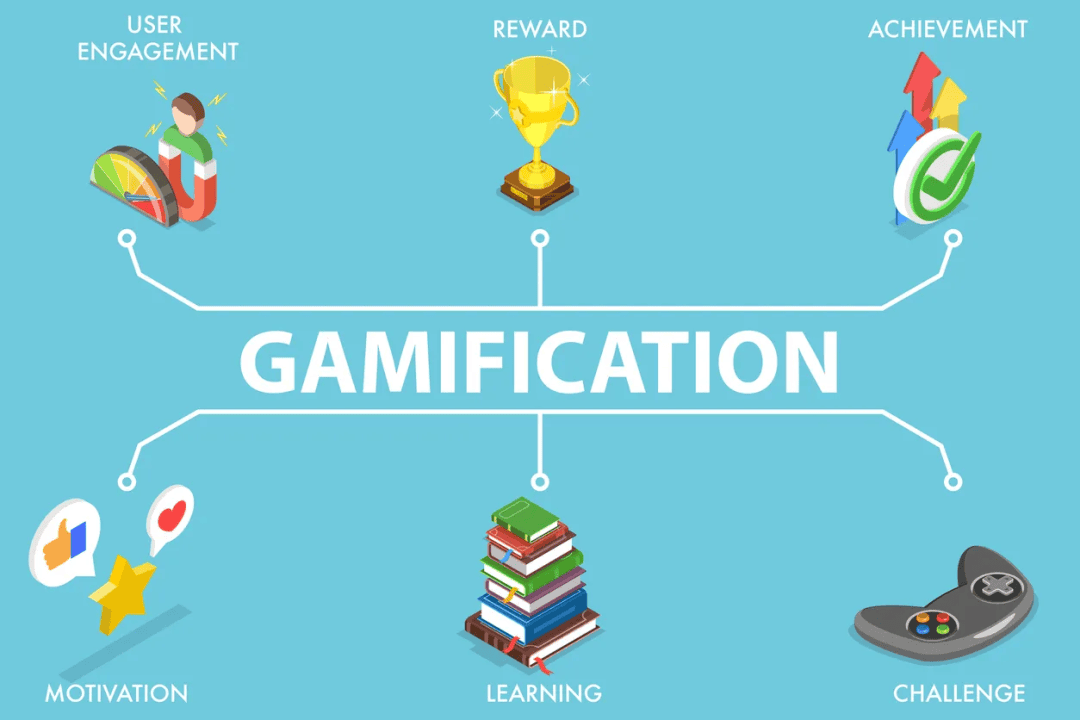Keeping students interested in a digital learning environment is more competitive than ever before in the history of education. Luckily, there’s a secret weapon that can make your online course more attractive: gamification. If you’ve ever played a video game, chances are that you’ve experienced gamification yourself. That’s because gamification is the practice of applying the game design elements found in video games to various non-game contexts (hence the name ‘gamification’). It’s an easy way to improve engagement, motivation, and learning outcomes among your students. Here’s a quick guide that explains how gamification works, why it works, and what you can do to add it to your online course right now.
Why Gamification Matters in Online Learning
The Psychology Behind Gamification
By being based on behavioural psychology, gamification can turn learning into a more engaging experience. In our model of motivation, Self-Determination Theory (SDT), individuals are primary motivated by learning when they feel autonomous, competent, and related to others. Gamification can leverage these psychological needs to motivate learners because games are full of challenges (autonomy), feedback (competence), and social interaction (relatedness).
For instance, students receive direct instruction about perceived competence when they receive points or badges immediately after completing a task. Expectancy/value theory says that such immediacy will persuade them to continue to work through the course (like playing a game after having levelled up).
Benefits of Gamification in Online Courses
The advantages of using gamification in the development of online coursework are multifold. It has been postulated that certain benefits of gamification include the ability to improve thinking skills, encourage students to learn more, minimise student boredom, preserve privacy and anonymity, and increase the level of student engagement.
Increased student interaction: Interactive elements such as quizzes, badges and leader boards keep the student engaged while they learn the content.
Enhance Retention: The instant feedback and repetitiveness that are characteristic of gamified elements help retain course material .
Boost Overall Completion Rates: Traditionally on the downside are the high dropout rates associated with big MOOCs, where only a small percentage of an online course’s original participants actually finish. By adding features such as levels rankings, courses using gamification can boast improved completion rates as students are driven to finish what they’ve started.

Key Gamification Elements to Include in Your Online Course
Points, Badges, and Leaderboards (PBL)
Among them, the most diffused strategy is the so-called ‘PBL’ (Points, Badges, Leaderboards), a motivational system that grants instant feedback and recognition to learners.
Points: award points for completing quizzes, learning activities or tasks, with points accumulating to unlock new levels or give out awards.
Badges: Assign badges to rewarding set course goals Badges are visual indications of tasks completed by the learner and can be printed on their profile.
Leaderboards: Show who is at the top of the course in a leaderboard. Students are more likely to participate actively knowing this, as there is healthy competition involved.
Progress Bars and Levels
The simplest gamification tool is probably the widely used progress bar. When a learner can see how much of the course they’ve already completed, it helps to keep them moving forward, particularly if they can see they’re more than halfway through. Similarly, breaking up the content of the course into levels gives the learner a sense of ‘levelling up’, which will make the size and complexity of the course content seem less daunting and overwhelming.
Quests and Challenges
These approaches can make learning a quest that you can assign, entice and invite students into, providing challenges that will become more advanced over time. For example, you might structure your course as a series of quests, each building on the progress made in the ones before it.
Students might have assignments to complete, milestones to reach, and challenges to accomplish before they can move to a new ‘level’ in their quest. At the end of each module, for example, you might require that they complete a challenge or milestone in order to continue the quest—opening up new content, earning rewards, or achieving prestige upon ‘unlocking’ the next quest area.

Advanced Gamification Techniques for High-Impact Engagement
Narrative and Storytelling
You can create an immersive experience that is effectively akin to the narrative, i.e., the storyline, in a video game where the purpose is not the story itself but the engagement. You lead the player to the conclusion you want through the storyline. Well, you can also do that with your course. Identify the goal of the course and have it reachable through the end of the lesson. If your material is typically considered boring and hard, you can make it non-boring and easily grasped through a narrative. Adjust the difficulty level. Students need detailed instructions on how to solve a difficult problem and fewer details on an easy one.
Simulations and Role-Playing
More sophisticated gamification techniques, which in essence transform more conventional classroom exercises into games, include simulations and role-playing, in which students apply their knowledge in real-world or simulated settings. For example, a business course might include a simulation in which students run a business and have to make decisions that affect its success. Role-playing can be used to turn a class in negotiation, for instance, into a game, having students ‘play the game’ of negotiation, taking on the roles of different players from the same table or of players from opposing tables or rooms, and then ‘debriefing’ what went well and what went badly.
Social Interaction and Collaboration
Social interaction is key to motivation in gameplay and is similarly effective in online courses. Use forums, group projects, or even peer reviews to encourage learners to interact and form social connections. Leader boards can even be adapted in an online course: rather than having all learners compete against each other, have them compete on teams and give points based on team performance.
Best Practices for Implementing Gamification
Start Simple and Scale Up
For newbies to gamification, start with simple things such as points, badges, and completion bars. Study how your users or pupils react for a while to see how those work for you. Then you might be ready to introduce more complex features such as levels, quests, and narratives. You can trial parts of the package you are building and pick and choose what is going to work better for your audience.
Align Gamification with Learning Objectives
Gamification must always be born out of the learning goals of a course. Don’t just add game-like elements because you think they’re cool. Each element you add should contribute to the students’ learning experience. For instance, if one of your learning goals is improving critical thinking, consider adding a puzzle to encourage this.
Collect Feedback and Iterate
Then, after adding gamification, ask your students what they liked and what could have been better. Based on their responses, continue to refine your approach and make your gamified elements more effective. Remember, there’s no precise formula for gamification. It requires constant calibration for your learners.

Measuring the Success of Gamification in Your Course
Track Engagement Metrics
Key engagement metrics include things such as the percentage of the total course completed or the amount of time that the student spent on course content. Participation metrics also include discussions and other activities your students engage in using pedagogical components you embed into your gamified course. Google Analytics and your LMS’s built-in analytics can help you analyse and compare how your students are spending time with your gamified course versus a course that does not employ gamification.
Evaluate Learning Outcomes
Make sure you have engagement metrics to compare against, especially with regards to how much actual learning is taking place. Are students scoring higher on assessments? Are they able to use what they learned in new situations? It can be helpful to compare the outcomes in the gamified course with what you had before.
Gather Student Feedback
Lastly, get directed feedback from your students on the course gamification. Survey them, interview them, and run a focus group with them. These subjective data points help shape a qualitative narrative that augments the quantitative metrics; they give you a window into your students’ experience of the gamified course, providing the full picture.
Conclusion
Adding gamification to your online courses can greatly increase the odds that your students will be engaged, motivated to learn the course material, and ultimately successful. Knowing what we do about gamification and how the different elements of gamification—points, badges, leaderboards, or more advanced or complex techniques such as storytelling or simulations—can work together to create more dynamic and enjoyable learning can make a world of difference in how our students engage with our courses and whether or not they will actually enjoy the learning process. Incorporating various online course engagement strategies can also foster a sense of community among learners, encouraging them to collaborate and share their experiences. This communal aspect not only bolsters motivation but also creates an environment where students feel supported and valued. As a result, the overall learning experience becomes richer and more impactful, leading to better retention of course material.
Most importantly, there is alignment with the learning objectives and iteration. Iteration depending on feedback from the students. Start small, scale up, and watch your e-courses light up with adventure as students keep coming back for more.

